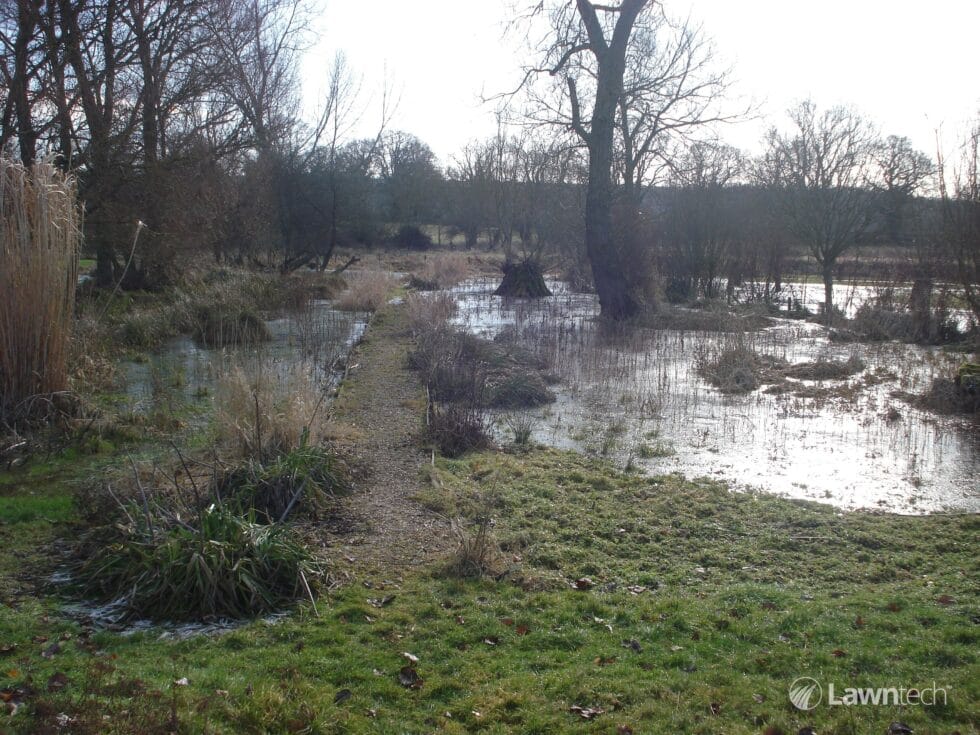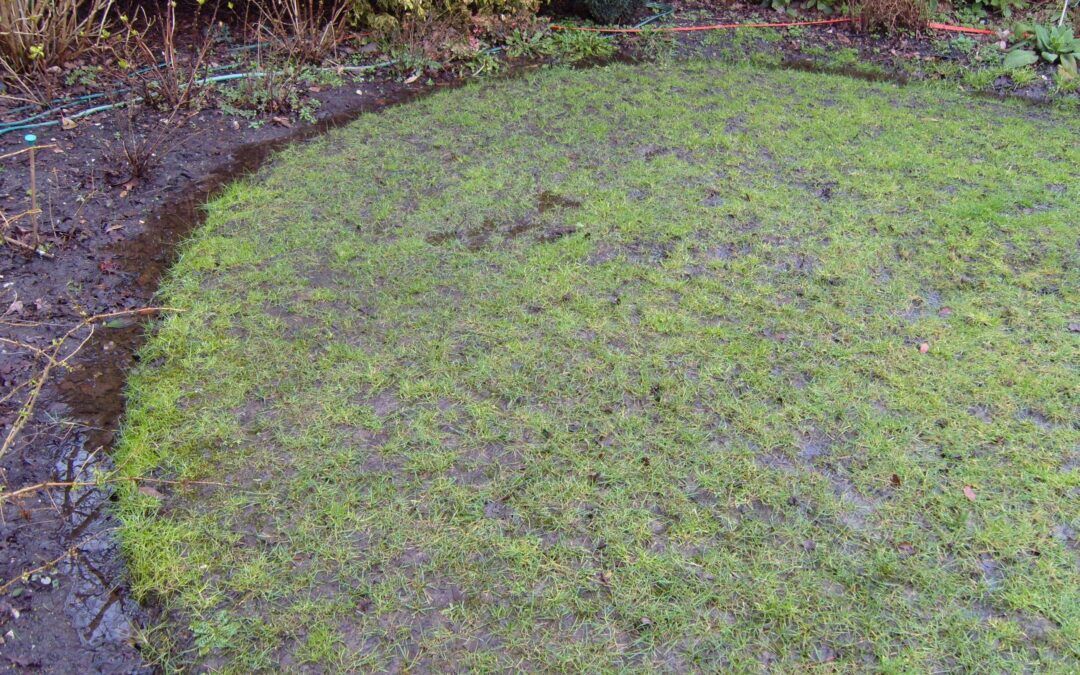Question: What do I do with a waterlogged lawn?
We know that here in the UK, we have a capricious climate. Whatever the season, we can be sure the weather will surprise us and winter is one of the most extreme culprits. In no time at all, our technicians can go from dealing with frost or snow on our clients’ lawns to full-on waterlogging.
At this time of year, we expect to receive calls from lawn owners who are concerned about the adverse long-term effects of waterlogging. Swollen rivers bursting their banks, or just a prolonged spell of relentless rain can all result in a lawn becoming swamped.
Every lawn will tolerate some level of water, soaking up the rainfall until the soil below becomes overwhelmed and unable to drain any further water away. Any more rain arriving after this point will have nowhere to go, so will just pool on top of the soil.

That lawn looks like it needs some help with drainage!
Whilst your lawn is unlikely to sustain any damage when hit by sporadic downpours, the grass can suffer in a number of ways if it is left underwater or saturated for lengthy periods. These afflictions can include:
- As the soil is inundated by the standing water, the supply of crucial oxygen to the grass roots is limited.
- The grass plants’ natural diffusion of Carbon Dioxide will be suppressed.
- Critical nutrients will be washed away, depriving the soil and grass plants of valuable fuel.
- Eventually this leads to the death of the grass roots, which will encourage rotting, decay and even the demise of the grass plants entirely.
- With the dying out of the grass, damp bare patches will be left behind. These are the perfect habitat for moss, and it will waste no time in invading those spaces.
With all this occurring, your soil can also become compacted.
All of this is very much a worst case scenario, and we do find that lawns are generally robust enough to recover without human intervention once the rain has abated. Harder-hit waterlogged lawns may need restoration, though. In order to do this, we would have to allow time for the soil to dry out enough so we can create an environment in which new seed will germinate. In the most acute of cases, this might call for a thorough renovation. This entails aeration, over-seeding, moss control and fertiliser, finished off with an application of top dressing.

It looks like it’s not the first time this lawn has been inundated. Fear not, we’re here to help.
Should your lawn be subject to frequent flooding or waterlogging, it may be that more permanent measures are needed. We would recommend that the lawn should be surveyed with land drainage in mind. Our sister company, Hewlett Turf & Landscapes specialise in this work. To find out more, visit their website here.
If, on the other hand, you only need a short-term remedy, here is our advice:
One golden rule is to avoid stepping on the lawn. This will keep compaction down, and make life a lot simpler.
Even if you have managed to reduce that compaction, aerating the soil will be a great help in its recovery by improving drainage and allowing oxygen back in around the grass roots. It will also address any compaction that you have, of course. Having an aerator available would be a boon but if the lawn’s size allows you to get around it using a garden fork, that’s great too.
Next, take away any grass shoots which are dead or damaged, and dispose of any detritus which may end up blocking your drains. Patios and paths can be hosed down, to wash away any pollutants.
If we had to pick two key areas to address if you have a lawn which is prone to waterlogging, they would be to improve both the drainage and the structure of the soil.
The Waterlogging page of our website’s Lawn Care Guide contains more detail on both short and long-term remedies for submerged lawns.
If your lawn looks like it needs this kind of attention, please feel free to Contact Us. We’re here to help.



